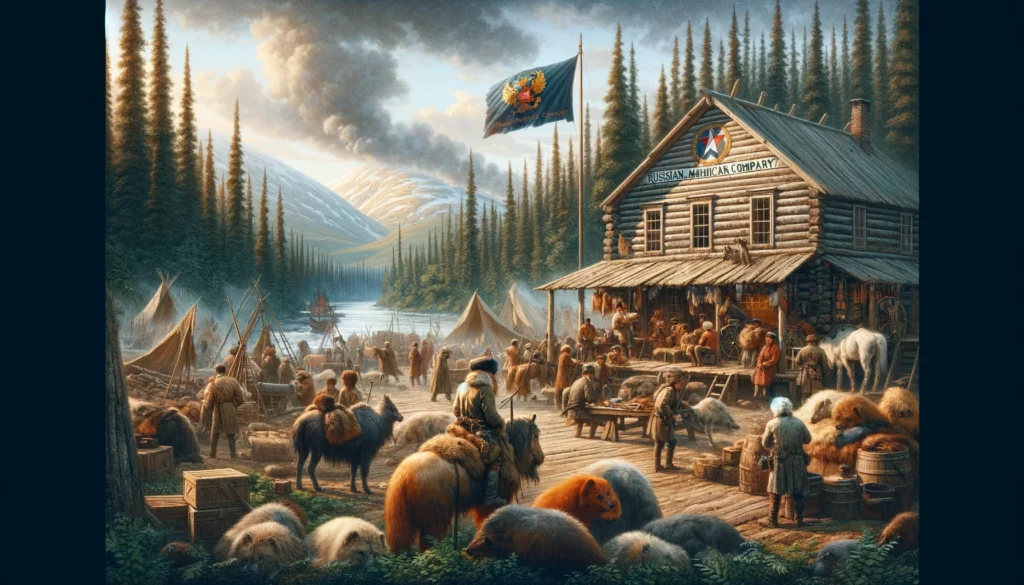Imagine a time when Alaska, now a picturesque part of the United States, was a mysterious, icy frontier at the edge of the known world. This vast and untamed land, characterized by rugged landscapes and harsh climates, stood as a beckoning challenge to the world’s great powers in the 18th century. Among them, Russia, with its relentless spirit of exploration and expansion, turned its gaze eastwards. But what compelled this mighty empire to reach across the Bering Strait and claim Alaska as its own?
The Importance: A Strategic and Economic Prize

Alaska, then a land of enigmatic beauty, was not just a territory to be mapped and forgotten. For Russia, it represented a trove of possibilities and strategic advantages. Its location, perched on the edge of the North Pacific, offered a vantage point for trade and influence that extended across oceans. Moreover, its rich natural resources, particularly the abundance of fur-bearing animals like sea otters, beckoned as a lucrative opportunity for an empire eager to expand its wealth and global standing.
Why Russia Sought Alaska: A Deep Dive into Historical Context and Events
When exploring the reasons behind Russia’s colonization of Alaska, it is essential to consider the specific historical events and timelines that shaped this significant endeavor.
The Early Expeditions: The Genesis of Interest
- 1728: Vitus Bering’s First Voyage
The Russian interest in Alaska can be traced back to the early 18th century. In 1728, under the reign of Peter the Great, Danish explorer Vitus Bering embarked on an expedition to explore the eastern extents of Siberia. This voyage led to the discovery of the strait between Asia and America, later named the Bering Strait. - 1741: The Seminal Voyage of Bering and Aleksei Chirikov
The most pivotal expedition occurred in 1741 when Vitus Bering and Aleksei Chirikov set sail on a second expedition. They reached the Alaskan coast, marking the first documented European contact with Alaska’s mainland. This expedition opened the door to fur trade opportunities, particularly in sea otter pelts, which were highly prized in Chinese and European markets.
The Era of Russian America: Consolidating Influence
- 1784: The Establishment of the First Russian Settlement
Grigory Shelikhov, a Russian merchant, established the first Russian settlement on Kodiak Island in 1784. This marked the beginning of permanent Russian presence in Alaska, a crucial step in establishing colonial control over the region. - 1799: The Russian-American Company Charter
In 1799, Tsar Paul I granted a charter to the Russian-American Company, an entity modeled after the British East India Company. This charter effectively monopolized Russian trading rights in North America and was a clear demonstration of the Russian Empire’s commitment to exploiting Alaska’s resources, particularly the lucrative fur trade.
Strategic and Political Considerations
- Early 19th Century: Russian Exploration and Diplomatic Efforts
Throughout the early 1800s, Russia continued to explore and map the Alaskan coast. Simultaneously, Russia engaged in diplomatic efforts to solidify its claims in the region, notably with the United States and Great Britain. In 1824 and 1825, Russia signed treaties with the U.S. and Great Britain, respectively, which acknowledged Russian claims over the coast of Alaska. - Mid-19th Century: Decline in the Fur Trade and Strategic Shifts
By the mid-19th century, the profitability of the fur trade began to wane. Overhunting had led to a significant decrease in fur-bearing animal populations. Additionally, Russia was facing political and economic challenges in Europe, which led to a reevaluation of its colonial priorities.
The Culmination: The Sale of Alaska

- 1867: Alaska Purchase
The culmination of Russian interest in Alaska came in 1867, when, facing economic difficulties and the strategic impracticality of defending the territory, Russia sold Alaska to the United States for $7.2 million. This transaction, known as the Alaska Purchase, marked the end of Russian colonization efforts in North America and the beginning of a new chapter in Alaskan history.
Closing Reflections: The Legacy and Lessons of Russian Alaska

The history of Russian colonization of Alaska stands not merely as a chapter in the annals of imperialism but as a narrative rich with lessons and implications. As we reflect on this period, several key points and questions emerge, inviting us to ponder the enduring impact of this historical epoch.
The Impact of Russian Alaska
- Cultural Exchange and Legacy: The Russian presence in Alaska left an indelible mark on the region’s cultural tapestry. Russian influence is still visible in the language, religion, and customs of some Alaskan communities. This cultural blend serves as a reminder of how historical encounters shape societies.
- Ecological and Environmental Considerations: The fur trade, central to Russian interests in Alaska, had profound ecological impacts. The near-extinction of certain species like the sea otter invites us to consider the environmental costs of economic exploitation.
- Geopolitical Repercussions: Russia’s sale of Alaska to the United States had significant geopolitical implications. It not only altered the balance of power in North America but also presaged shifts in global politics.